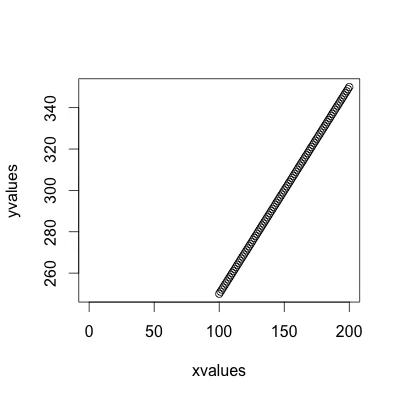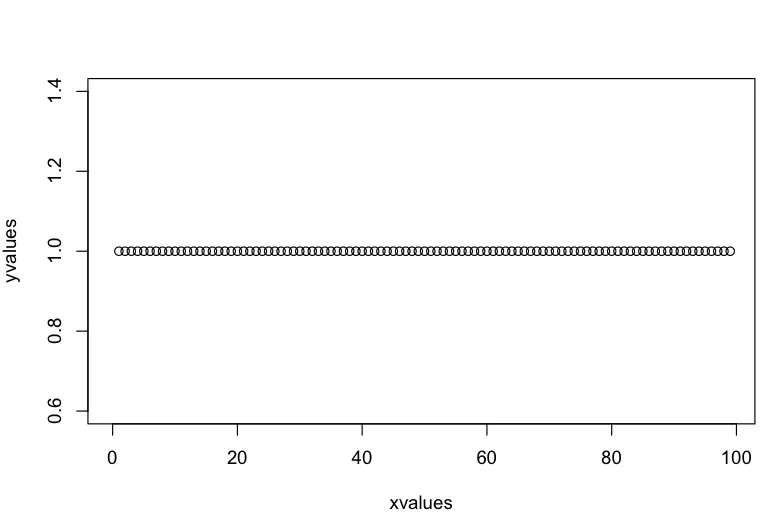假设我创建了一个像这样的简单图:
xvalues <- 100:200
yvalues <- 250:350
plot(xvalues, yvalues)

然而,我想让x轴从0开始,并且将上限留给R来计算。我该怎么做呢?
我知道有一个选项xlim=c(lower bound, upper bound),但是我不知道上限是多少。而且,显然我无法让上限未指定:
> plot(xvalues, yvalues, xlim=c(0))
Error in plot.window(...) : invalid 'xlim' value
如果我不需要计算xvalues向量的最大值来获取上限,那将是非常浪费的,特别是对于一个非常大的数据向量。


max函数非常快。对于一个具有1亿个条目的向量,它只需要不到200毫秒的时间,试试x <- rnorm(1e8); system.time(max(x))。因此,如果这仍然是个问题,那么你的数据一定非常巨大。 - Mark Heckmann